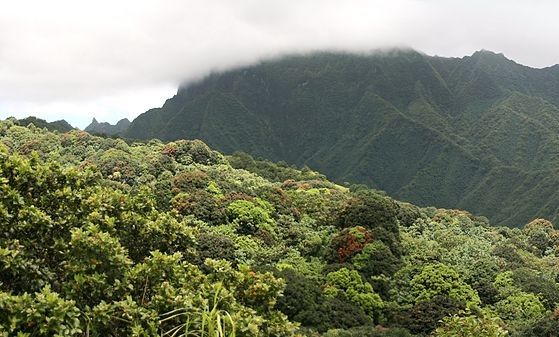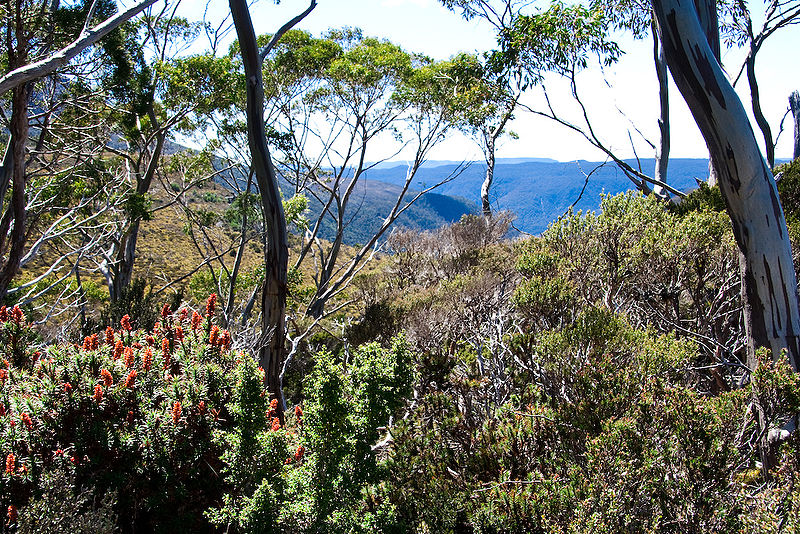Giving living forests an economic value
Living forests are – together with the ocean – the only systems on earth removing carbon from the atmosphere. Why do we still let the tropical forests disappear?

Rainforests are among the planet’s most important ecosystems. These vast forests are the home of indigenous peoples and other local communities with unique cultures and languages spoken only there. People living in the forests have comprehensive knowledge of the plants and animals living in their surroundings which is valuable in its own right, but also holding yet unknown commercial potential, not least for life-saving medicines.
More than half of the world’s land-based species are living in the rainforests and depend on them for their survival. Rainforests are also contributing to local and global rainfall patterns by playing a crucial part in the water cycles on the planet. The rainforests store enormous amounts of carbon. Living forests are, together with the ocean, the only systems removing carbon from the atmosphere.
We know this already. It has been repeated by environmentalists and scientists over and over again. The importance of rainforests for the stability of the planet’s climate and for remaining on the two-degree target pathway is unquestionable. Still, the forests are destroyed at alarming rates.
Funding forest protection
Deforestation is driven by demand for agricultural commodities and infrastructure expansion, by extractive industries, by the need for firewood and building materials, often with poverty as an underlying common denominator and facilitated by poor governance and law enforcement. Financially, to the people that decide their fate, the forests are more valuable dead than alive.
Norway’s Climate and Forest Initiative has spent approximately US$500 billion annually since 2009 to address the challenge of deforestation. The Initiative’s main approach has been to establish bilateral partnerships aiming to pay for verified reduced emissions from deforestation and forest degradation. In this way, the living forests are given an economic value, which can act as an incentive to address the enablers of deforestation.
Norway’s Climate and Forest Initiative has spent approximately US$500 billion annually since 2009 to address the challenge of deforestation
This has worked well in countries where the reduced deforestation agenda has been aligned with national priorities. Brazil remains the most prominent example, where deforestation has been reduced by almost 80 per cent since 2004. This is one of the single biggest contributions to reducing carbon emissions worldwide and is mainly caused by Brazil strengthening its forest policy measures, in particular law enforcement.
In other countries, the challenges of conflicting economic interests like agricultural expansion, infrastructure development and ‘business as usual’ growth – often in combination with governance challenges and limited resources for law enforcement – have led to slower progress. Raising sufficient public funding in support of these countries is an obvious solution, and indeed must remain an area of focus for us all.
At the same time, the funding needs for mitigation and adaptation in both developed and developing countries are increasing, while traditional donor countries are facing internal financial and social pressure. Therefore, the scale of public funding for reduced deforestation is not likely – on its own – to reach the level needed to provide a sufficient incentive for global, transformational change.
Private sector commitments
Isolated, this analysis might leave us with limited hope for saving the rainforests. However, encouraging developments have evolved over the last few years in the private sector. One major breakthrough happened in 2010 when the Consumer Goods Forum, consisting of 400 companies with US$2.8 trillion in annual revenue, committed to end deforestation by 2020. This has been followed by the striking example of zero deforestation commitments by the big palm oil traders.
Currently 96 per cent of the world’s trade in palm oil is bound by zero deforestation commitments
Currently 96 per cent of the world’s trade in palm oil is bound by zero deforestation commitments. Companies like Wilmar, Cargill, Golden Agri Resources and Musim Mas have publically announced their support to this agenda and published their deforestation-free policies. This has been a rapid and highly important change, with commercial and conservation interests aligning for the first time in history.
The commitments to zero deforestation by palm oil traders and other commercial actors open up the possibility for new partnerships. At this point in history, we have a unique opportunity to build public-private partnerships for production and protection. This has grown out of the recognition that the challenge of deforestation cannot be solved by one actor in isolation – all stakeholders with the power of changing the status quo must work together.
Alignment of interests
The alignment of interests is striking. Forest countries are facing serious challenges due to deforestation, explicitly through sinking water levels, fires, erosion, decrease in food security, and implicitly through disputes over land ownership, land encroachment, corruption and inefficient spatial planning. Norway, like other donor countries, is looking for cost effective international climate mitigation initiatives, and has set aside substantial funding for this.
 Private businesses have committed to zero deforestation in their supply chains, and are now in a situation where they rely on increased supply of sustainable and deforestation-free commodities, implying that the production of these commodities in many cases needs to undergo a transformation.
Private businesses have committed to zero deforestation in their supply chains, and are now in a situation where they rely on increased supply of sustainable and deforestation-free commodities, implying that the production of these commodities in many cases needs to undergo a transformation.
The hope is that this relatively newly established alignment of interests can join forces and in combination be a force of change for the better. However, in order for this to work all involved stakeholders would have to do their part, with sincerity and force.
The components for such private public compacts for production and protection include public policy reforms, commercial purchasing commitments, international donor support and private capital investments. In addition, the involvement of civil society and indigenous peoples’ organisations are crucial for the credibility and social aspects of the compacts. The content, importance and interaction of each of the components are elaborated in some detail below.
Public policy reforms. Public policy reforms are the essential catalysts for reducing deforestation and encouraging private sector investments. Depending on the national context, these reforms would address land use planning, land tenure reform, increased transparency around the biophysical and legal status of forests as well as degraded and agricultural lands, land conflict resolution, concessions regime reform, forest and environmental law enforcement, and redirection of domestic public funding to incentivise the desired behaviour.
Such reforms require robust political leadership, which a number of forest countries are providing already. Incentives for further strengthening such leadership and helping fortify domestic coalitions for change could take the form of aligned support and investments from the private sector and international public-sector partners as well as potentially from civil society, indigenous peoples’ groups and other local communities.
Commercial purchasing commitments. Relevant companies would commit to purchase set quantities of specified commodities within predetermined price ranges. These commitments would be connected to countries and regions with a pronounced ambition to reduce deforestation, especially through public policy reform.
Such purchase agreements would aim to increase the supply of sustainable commodities; enable smallholder farmers on marginal lands to benefit from enhanced economic opportunity; catalyse contributions from other compact participants; and make significant progress toward achieving companies’ deforestation-free supply chain commitments.
International donor support. Government commitments to pay tropical forest countries for verified reductions in emissions from deforestation could play a decisive role. Most importantly, such payments would contribute to incentivising policy changes.
Crucially, too, international donor funding could be channelled to support forest country policy implementation, technical assistance and other start-up activities that could underpin a transformational production-protection compact. Public finance could also provide a ‘de-risking’ function helping to enable private capital investment in the context of a particular compact.
Private capital investment. The capital that is needed to transform commodity supply chains, at scale, is only available through private capital markets; public funding is insufficient. Financial products would therefore have to be structured to attract investors and make affordable capital available in order to make the supply chains deforestation free.
To attract investors, key elements of these financial products would include risk reduction and/or risk sharing features to generate acceptable, risk-adjusted, return targets. Corporate commitments, from for instance palm oil companies, provide an unprecedented opportunity to put private capital to work in those supply chains.
Corporate commitments provide an unprecedented opportunity to put private capital to work in those supply chains
The potential public-sector elements of these compact-like mechanisms are already partially in place in many countries. Examples include the Peru-Germany-Norway partnership, the Colombia-Germany-United Kingdom-Norway partnership, and the Indonesia-Norway partnerships.
Details on these can be found on https://www.regjeringen.no/en/topics/climate-and-environment/climate/climate-and-forest-initiative/id2000712. These partnerships will be further developed and new ones probably added in 2015. They could, in many instances, serve as the structural basis for a significant number of production-protection compacts.
A shared goal
In conclusion, we have outlined and explored the potential for mutually reinforcing, multi-sectoral agreements, or compacts, at the country level to enable private capital to be aggregated, structured, and put to work in forest countries that are committed to a clearly defined, zero-deforestation development pathway. In tandem with public sector payments for performance, this private capital could provide a tangible incentive for committed forest countries, making it less financially and politically costly to implement the reform agendas needed for forest protection.
The solutions, surely, will look different from country to country and commodity to commodity. But the direction and the potential for transformational change is global.
Again, this is the first time in history where private businesses, governments and environmentalists share the goal of ending deforestation. This is indeed a powerful coalition. I am confident that we will find ways of combining the strengths of these stakeholders and together join forces to secure enough food as well as living forests.








